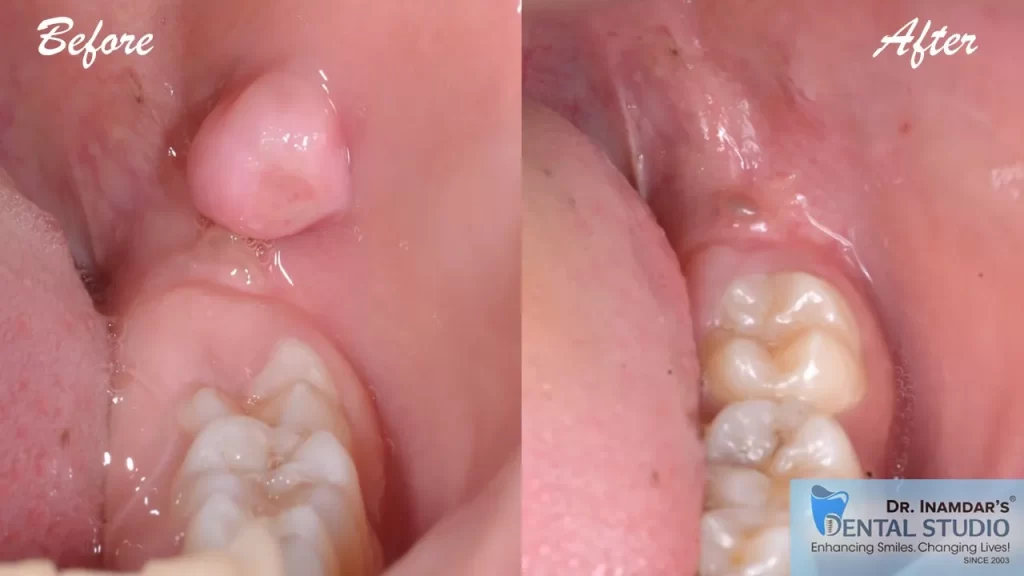Oral Lesions
Clear Aligner, Invisible Braces
When it comes to oral health, one common concern that many individuals face is the development of oral lesions. These small, often painful sores can disrupt daily life and raise questions about their causes, symptoms, and the best ways to manage them. In this comprehensive guide, we will delve into the world of oral lesions, shedding light on their various types, potential triggers, and effective treatment options. Let’s begin our journey to better oral health.
Types of Oral Lesions
1. Canker Sores (Aphthous Ulcers)
Canker sores are one of the most common oral lesions. These shallow, round sores typically appear inside the mouth, often on the tongue or the inner cheek. They are usually painful and can make eating and talking uncomfortable.
2. Cold Sores (Fever Blisters)
Cold sores, also known as fever blisters, are caused by the herpes simplex virus. They usually appear on or around the lips and are characterized by fluid-filled blisters. Cold sores are contagious and can be triggered by stress, fever, or sunlight exposure.
3. Leukoplakia
Leukoplakia refers to white, thickened patches that form on the tongue, inside of the cheeks, or on the gums. These patches are often painless but can be precancerous in some cases, necessitating medical evaluation.
4. Erythroplakia
Erythroplakia is a less common but more concerning type of oral lesion. It appears as bright red patches in the mouth and is often associated with a higher risk of oral cancer. Any persistent red patch should be evaluated promptly.
Causes of Oral Lesions
Understanding the underlying causes of oral lesions is crucial for effective prevention and management. Some common factors that contribute to oral lesions include:
1. Trauma
Accidental biting of the tongue or cheek, sharp edges of dental appliances, or dental work can lead to the development of oral lesions.
2. Viral Infections
Viral infections, such as the herpes simplex virus, can cause recurrent cold sores or ulcers in the mouth.
3. Tobacco Use
Smoking or using smokeless tobacco products can irritate the mouth’s delicate tissues, increasing the risk of developing lesions.
4. Poor Oral Hygiene
Inadequate oral care can lead to a buildup of bacteria, increasing the likelihood of oral lesions, especially canker sores.
Symptoms and Diagnosis
Recognizing the symptoms of oral lesions is essential for early intervention. Common signs include:
- Pain or discomfort
- Red or white patches
- Swelling or inflammation
- Difficulty in eating or speaking
If you suspect you have an oral lesion, it’s crucial to consult a dentist or healthcare provider for a proper diagnosis. They may recommend a biopsy in some cases to rule out serious conditions.
Treatment Options
The treatment of oral lesions largely depends on their type and severity. Here are some common treatment options:
1. Over-the-Counter (OTC) Medications
For mild canker sores, OTC topical gels or creams can provide relief from pain and promote healing.
2. Prescription Medications
Severe or recurrent lesions, such as cold sores, may require antiviral medications prescribed by a healthcare provider.
3. Oral Rinses
Dentists may recommend special oral rinses to reduce pain and inflammation associated with oral lesions.
4. Dental Procedures
In some cases, dental procedures may be necessary to address the underlying cause of oral lesions, such as smoothing rough dental appliances or removing irritating factors.
Prevention
Preventing oral lesions involves maintaining good oral hygiene and adopting healthy habits:
- Brush and floss regularly to keep your mouth clean.
- Avoid tobacco use, which can irritate oral tissues.
- Manage stress, as it can trigger recurrent cold sores.
- Use lip balm with sun protection to prevent sun-induced cold sores.
Conclusion
Oral lesions can be uncomfortable and concerning, but with proper understanding and care, they can be managed effectively. If you experience persistent oral lesions or are concerned about your oral health, don’t hesitate to seek professional advice from a dentist or healthcare provider.
FAQs
1. Can oral lesions be cancerous?
Some oral lesions, particularly erythroplakia and leukoplakia, can be precancerous or indicative of oral cancer. It’s essential to have any persistent or suspicious oral lesion evaluated promptly.
2. Are cold sores the same as canker sores?
No, cold sores and canker sores are different. Cold sores are caused by the herpes simplex virus and appear outside the mouth, while canker sores are shallow ulcers that develop inside the mouth.
3. What can I do to relieve the pain of oral lesions?
Over-the-counter topical gels, pain-relief medications, and avoiding spicy or acidic foods can help alleviate the pain associated with oral lesions.
4. Can stress trigger oral lesions?
Yes, stress can weaken the immune system and trigger recurrent cold sores in some individuals. Stress management techniques may help reduce the frequency of outbreaks.
5. How can I protect myself from oral lesions caused by dental work?
To minimize the risk of oral lesions from dental work, maintain good oral hygiene, and promptly address any sharp edges or irritations caused by dental appliances. Discuss any concerns with your dentist during follow-up visits.
Case 1

